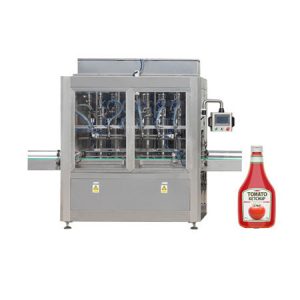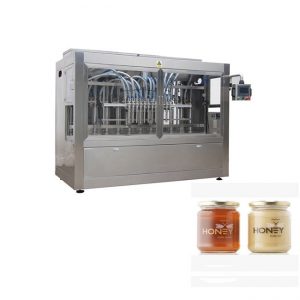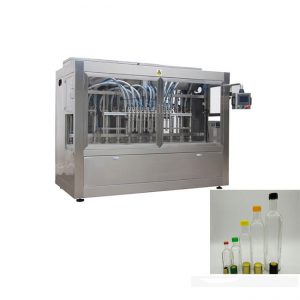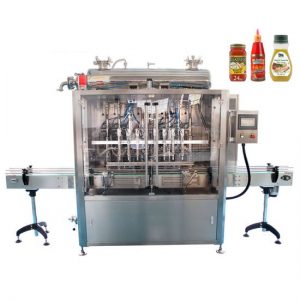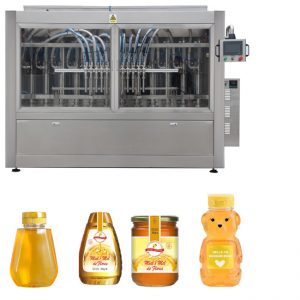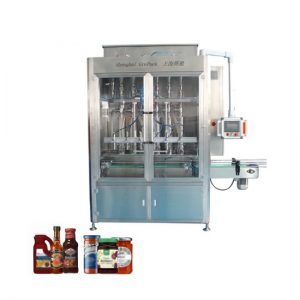Jam Filling Machine
Jam production
Jam means the product prepared from, ripe, fresh, dehydrated, frozen or previously packed fruits including fruit juices, fruit pulp, fruit juice concentrate or dry fruit by boiling its pieces or pulp or puree with nutritive sweeteners namely sugar, dextrose, invert sugar or liquid glucose to a suitable consistency. It may also contain fruit pieces and any other ingredients suitable for the products. It may be prepared from any of the suitable fruits, singly or in combination. It shall have the flavor of the original fruit(s) and shall be free from burnt or objectionable flavors and crystallization.
What are the steps of jam production?
Inspection
Ripe firm fruits received for jam production are sorted and graded according to their color, sensory appeal. Spoiled fruits are removed from the lot. This can be done using hand picking, color sorters.
Washing
For effective washing of fruits, 200 ppm of chlorine can be used in water. Ph and temperature should be maintained, to prevent fruits from getting damaged or bruised. Dump and spray washers can be used in industries.
Peeling
Fruits can be hand peeled as in case of citrus and apple, mechanical peelers and automated peeling machines containing blades are generally used in industries. Some fruits don’t require peeling. Pitting is sone in fruits containing hard inner stones.
Pulping
Pulping is done to remove the seed and core part. Various pulping machines are available in the market for fruits such as mangoes, peaches, tomatoes, bananas, draw berries and, etc.
The gap between the sieve and rotor can be adjusted to suit different type of size and qualities of materials to be pulped
Addition of sugar
Required amount of sugar and pectin is added to the fruit pulp/juice. Water can be added if needed. Sugar binds to the water molecules and frees up the pectin chains to form their network. Adding more pectin results in a harder jam and using more sugar can make it sticky.
Boiling
Boiling is the most important step in jam making, which require a lot more patience.
After keeping the above-prepared mixture on heat, we need to wait till the sugar dissolves. Slowly, the whole room will get filled by the fruity smell and a network like pectins foamy scum may form on the surface of the jam; this is normal and can be removed by adding a little butter (about 20g) to break the surface tension or by skimming it off with a spoon while your mixture is cooling
Addition of citric acid
Specified amount of citric acid is added while boiling itself. We heat the mixture up to 105 °c or 68-70%tss to ensure proper setting of jam. Sheet test can also be performed to check jam.
Sheet test – a small portion of jam is taken in the spoon and cooked a bit, and allowed to drop if product drops as sheet or flakes, the jam is made perfect, otherwise boiling is continued
Filling into jars
Jam is filled hot into the sterilized jars, by piston pump fillers, metal caps are vacuum capped on the jars, allowed to cool down through the cooling tunnel and finally the label is labeled on the jars. Making the jam jars ready for distribution. Businesses may sell their jams to customers directly, or they might sell to retailers.
Storage
Canned jam should be kept in cool, dry places away from sunlight.
The shelf life of canned jam is around one year.
It’s done!
This blend of sugar and fruits can tastes amazing, and you can use it with any boring recipe to make it taste divine
How you can get the right packaging and accurate filling machine for your product ?
Ease of cleaning and ease of use: are these the main characteristics that a filling machine have to comply with when packaging jam.
In order to find the best machine for your needs, consider the following product characteristics:
The product
What is the viscosity? What is production capacity? Are there chunks? Is it hot packed?
Environment
Where is the machine going to be located? Electricity needed? Electricity consumption? What types of cleaning and maintenance processes are required? Does it need an air compressor?
Capping characteristics
What type of cap is required? Screw, press-on or twist -off? Is the machine automatic or semi-automatic? Does it require sleeve shrink? Does it require heat sealing, induction heating?
